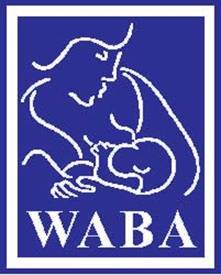Protecting our first food and mother earth
 In any journey it is the first step that counts. Breastfeeding is one of the first and practical steps that we must take to protect not only the health of babies and mothers but also the health of our planet – right from the start by providing green and sustainable nourishment to babies. Exploring ways to promote sustainable food consumption and production patterns is paramount to mitigate environmental degradation and climate change.
In any journey it is the first step that counts. Breastfeeding is one of the first and practical steps that we must take to protect not only the health of babies and mothers but also the health of our planet – right from the start by providing green and sustainable nourishment to babies. Exploring ways to promote sustainable food consumption and production patterns is paramount to mitigate environmental degradation and climate change.
The theme of World Environment Day 2017 “Connecting People to Nature” is an excellent way to get people to think of how interconnected we are with nature. We are all part of nature and we depend on it for our survival, thus need to appreciate its beauty and importance, and take forward the call to protect the Earth that we rely upon. Unfortunately, the current reality is that environmental pollutants are causing harm to us and we are all carrying the toxic burden of industrial and agricultural toxins along with other dangerous substances in our bodies. These chemicals also pass through the placenta and into the fetus during pregnancy, and through breastmilk after birth1 . However, according to the World Health Organisation (WHO) the advantages of breastfeeding far outweigh the potential risks from environmental pollutants. Taking into account breastfeeding’s short- and long-term health benefits for infants and mothers, WHO recommends breastfeeding in all but extreme circumstances2 .
The continued adherence to an industrial system of agriculture based on highly hazardous pesticides has acute and chronic impacts on human health, livestock, wildlife, pollinators, beneficial insects all of which are essential to a stable, healthy and productive ecosystem3. Pesticides now contaminate environmental media across the globe, including soil, surface- and ground- waters, air, rain, fog, snow, and living organisms. Residues have been documented from grasses high on the Himalayas to the bark of trees4, in breastmilk, human blood and other body fluids in many countries. Yet again, the benefits associated with breastmilk clearly outweigh the risk presented by current levels of contaminants in breastmilk 5.
Breastmilk is the ideal first food for infant that contains all of the essential nutrients, antibodies and other factors important for balanced growth and development that cannot be replicated artificially. Breastmilk is a “natural, renewable food” that is environmentally safe and green because it is produced and delivered to the consumer without pollution, packaging, or waste. Relying on natural resources such as breastfeeding plays an important role in saving earth. There is no doubt that breastfeeding – which comes ready-made, ready to feed and does not need heating up — is a huge saving in terms of carbon footprint. It also impacts positively on maternal and child survival, health and wellbeing.
Sustainable farming practices such as agroecology help improve health and nutrition through more diverse, nutritious and fresh diets as well as reduce the incidence of pesticide poisonings and pesticide-related diseases 6. Governments have to be sensitised to the importance of the issue and urged to act in the best interests of vulnerable groups such as women and children. Reducing toxic chemicals in the environment can decrease the body burden of these contaminants in all of us. Regulatory frameworks are thus important to minimise and eliminate exposure to harmful contaminants 1. The lives of all children and people worldwide must be protected by recognising hazardous pesticides in the context not only of human health and environmental impacts and costs, but also in the context of food security, poverty reduction, and climate change 3.
The World Alliance for Breastfeeding Action (WABA) and Pesticide Action Network Asia and the Pacific (PAN AP) are calling for the elimination of environmental pollutants that disrupt our nature and harm our bodies. By working together, we can achieve sustainable development by protecting, promoting and supporting breastfeeding and agroecological food production that are good for humans and nature. A win-win situation.
For more information, contact:
Revathi Ramachandran, revathi@waba.org.my, WABA
Deeppa Ravindran, deeppa.ravindran@panap.net, PAN Asia Pacific (panap.net)
- http://www.waba.org.my/pdf/FAQ%20Oct2003-10.pdf
- http://www.who.int/ceh/publications/en/poster15new.pdf
- http://www.panna.org/sites/default/files/Phasing-Out-HHPs-with-Agroecology.pdf
- http://panap.net/2017/02/global-governance-hazardous-pesticides-protect-children-beyond-2020/
- http://www.ohchr.org/Documents/Issues/ToxicWastes/PesticidesRtoFood/IBFAN%20and%20GIFA.pdf
- http://www.panna.org/agroecology-farming-solutions/agroecology-resilient-productive
